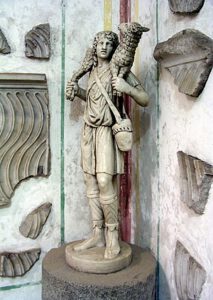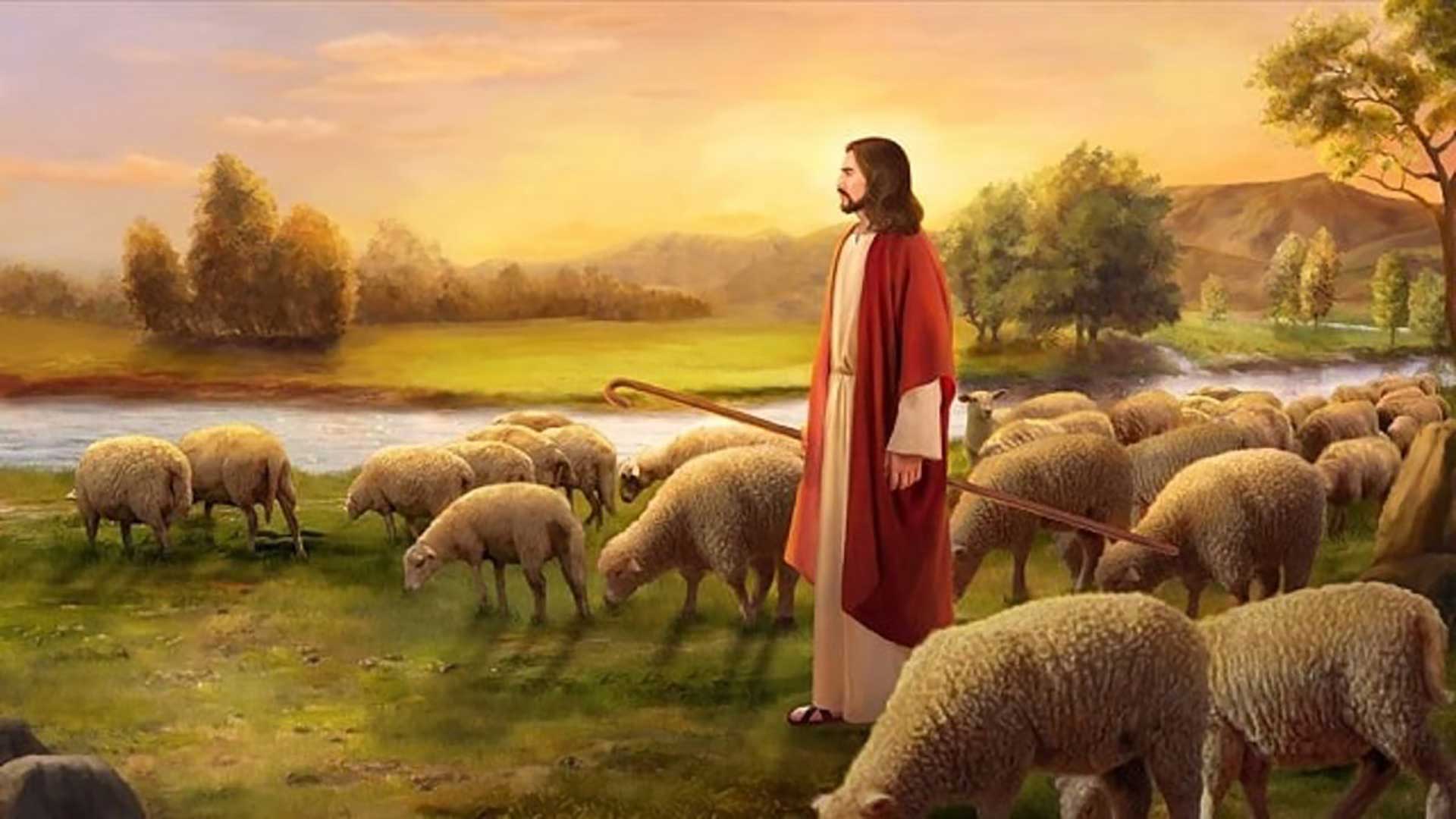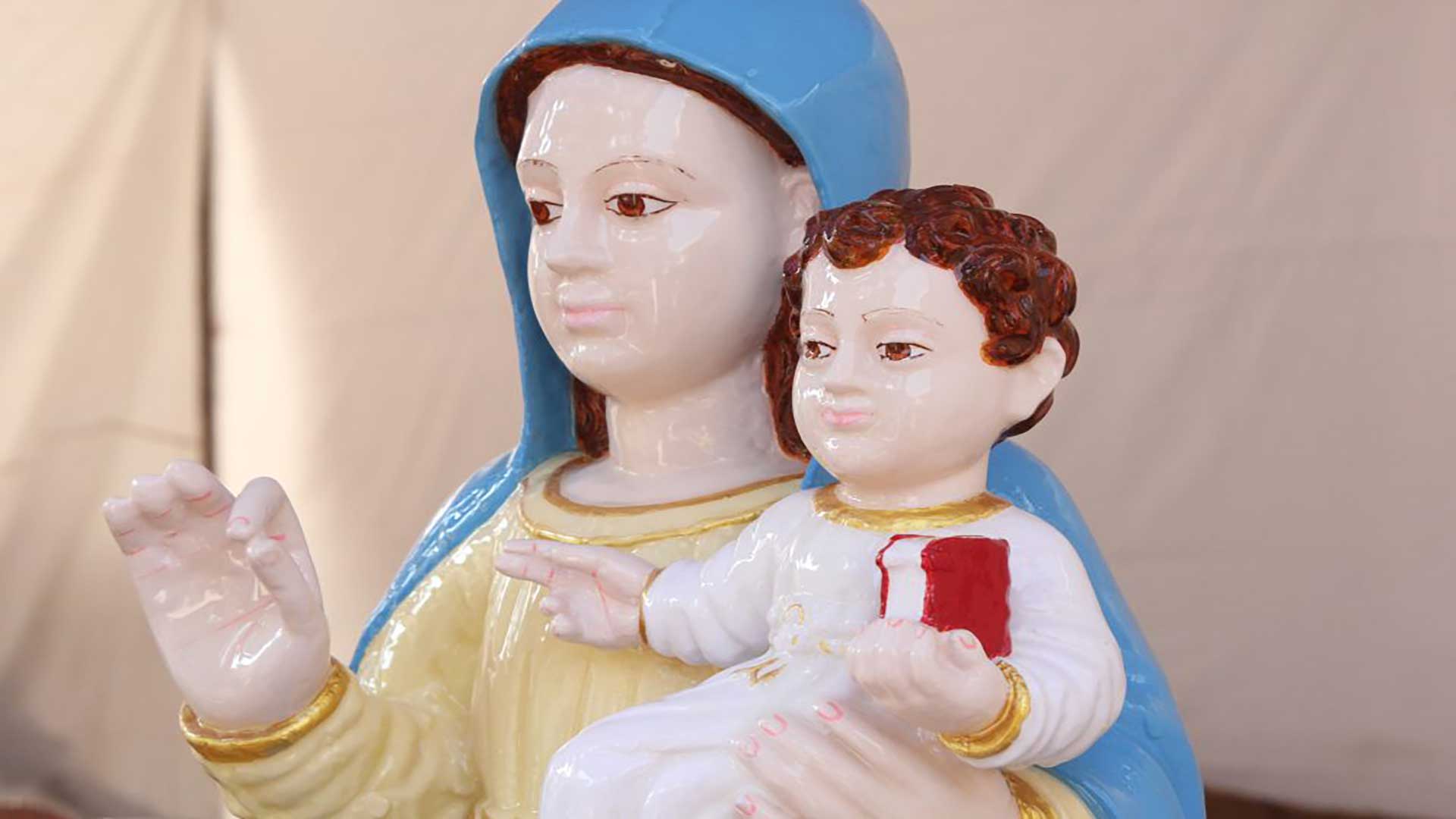“The Lord is my Shepherd”
In our somewhat directionless world, isn’t it reassuring to hear our inner voice say, “The Lord is my shepherd, there is nothing I shall want”? These verses from the David’s Psalm echo through the three Readings of today; not only were they said by Jesus in His own lifetime, Peter repeats them endlessly after the Resurrection.
After the Resurrection, it was important to catechise. We see once again, in the First Reading (Acts 2: 14, 36-41), how the first Apostle reproached people for putting Jesus to death and urged them to repent. The reward for their repentance would be to receive “the gift of the Holy Spirit”. The pardon of our sins, the gift of the Holy Spirit and the New Covenant are the fulfilment of messianic promises. They are open to anyone who accepts the Word of God and transforms their life. And what a privilege, as St Peter puts it, “The promise is to you and to your children and to all that are far off, every one whom the Lord our God calls to Him.”

Again, in his First Letter, part of which forms the Second Reading of today (1 Pet 2: 20-25), St Peter conscientizes the people. He talks about how Jesus who is at once our Shepherd and Paschal Lamb. By His voluntary Sacrifice, He showed us the way from death to life eternal. St Peter therefore invites us to suffer, as Jesus did, in the midst of life’s difficulties, which include misunderstandings, calumnies, accusations and persecutions, all of which Christians suffer for being a stumbling block and rock of offence to the world.
Through it all, we learn from the Gospel (Jn 10: 1-10), we have nothing to worry, for Jesus the Good Shepherd is always by our side. He knows His Father in Heaven very intimately, and know us too with the same intimacy. He thus becomes “the door” to Heaven, the Mediator par excellence to our Father in Heaven. And His warning against false teachers and doctors – “thieves and robbers” all – is valid for all times, especially our own. He is the Way, the Truth and the Life; He is our only salvation. He is the door; anyone who enters by Him alone will be saved.
This Sunday, then, is rightly known as “Good Shepherd Sunday”. May we trust only Jesus to be our Shepherd through life; through Him alone can we have life, and life in abundance. Above all, may our Pope, our bishops and priests be good shepherds, taking the lay faithful always to the right pasture.
Mary to Mira: just a sound away?
The article titled ‘Milagris and Lairai: fostering the bond of divine unity’, by historian Dr Sushila Sawant Mendes (Herald, 23 April 2023)[1] has added to the myth rather than clarified it. One would expect to be enlightened on the origin of the statue of Our Lady of Miracles (also Milagr Saibinn, in Konkani), or the story of the Seven Sisters, or even be favoured with a sociological or anthropological explanation; but that was not to be. At any rate, as a lay reader, I wish to raise a few issues about its interface with Catholic practices in Goan society.
To start with, the loose use of the term ‘divine’ with reference to Our Lady leads to considerable confusion. Mary, the mother of Jesus, is not a goddess but a human being, whereas Lairai, shrouded in legend, is one of the seven sister goddesses to the Hindus. Why link a historical personage to a mythological septet? It is therefore gratuitous to put Lairai on a par with Milagr Saibinn.
Quite understandably, the article is riddled with expressions like ‘It is believed’ and ‘Legend has it’. But saying that “Milagris Saibin is believed to be the deity Mirabai, a sister of Goddess Lairai” begs the question: believed by whom? Is there a formal acceptance of the belief, or is it a belief held by an amorphous mass of individuals that offer flowers or pour oil on the statue? The latter practice is, perhaps, of recent origin and the only one of its kind in Goa.
From the Catholic perspective, the story is not Mariological. And stating that “There is a tradition to offer oil to the Milagris Saibin from the Shirigao Devasthan and mogra flowers are offered to Lairai Devi from the St Jerome Church in Mapusa” is not in keeping with any official Catholic tradition in Goa. So, the onus of showing the origin of such a protocol, if any, lies on our historian-writer.
That the purported institutional exchange is a no-no even from the Hindu side was confirmed by iconographer Dr Rohit R. Phalgaonkar, who has researched the issue.[2] No doubt, Mirabai was one of the seven sisters from folklore, but after her abode, Mapusa (not Mayem, as stated in the article), converted to the Catholic faith, way back in the sixteenth century, the temple authorities in Shirigao (and elsewhere) stopped mentioning Mirabai in the traditional invocations. In fact, “none of the sister temples make a reference to Milagris in their official records and in the religious duties or rituals that they perform at the festival. She is not an icon of the Hindus; she is a Christian icon," he added.[3]
Therefore, to say that Milagr Saibinn has taken the place of Mirabai is not plausible; and Dr Phalgaonkar wonders why Milagr Saibinn would have a link with Lairai alone and not with the other sisters! This only goes to prove that, if the issue is not handled with academic rigour, it can be grist to the myth-making mill even in our day and age.
Not surprisingly, there is a dash of magic realism, which helps bring the story alive: “… it is believed that the two sisters visited each other on the day of their respective festivals.” And risking repetition, the writer says, “Folklore tells us that Milagris Saibin would send flowers as a gift to her sister, Goddess Lairai, during the zatra. Lairai would send in turn oil for her sister’s feast.” That is to say, while earlier on in the article, the two institutions were given credit for the magical feat, now it is Milagr Saibinn and Lairai Devi themselves who show how they care for each other! Can scientific writing sacrifice accuracy at the altar of artistic licence?
With the theme of unity and a sense of disclosure ever present, the writer is keen to show that Goa is an oasis of intercommunal peace; and she bends over backwards to prove her point. That “every generation of the people of Assolna, Velim and Cuncolim have grown up with the belief that the Goddess Shantadurga of Fatorpa is the sister of Saude Saibin of the Church of Our Lady of Health in Cuncolim” is either an exaggeration or it speaks poorly of the catechesis received by the Catholics of those villages (AVC).
That is a facile generalisation, which, read alongside the sentences now in parentheses (“The festival of the Sontrios in Cuncolim and the devotional visits of the Catholics to this temple is a graphic representation of this undying belief. Tomorrow is both the feast of Milagres Saibin at Mapusa and the Shree Devi Lairai Zatra at Shirigao, both to be celebrated on the same day after thirteen years, on April 24 this year”) summarily puts Catholics across the length and breadth of Goa under the sontri or umbrella of a syncretic religion.
The article runs high on emotions. After referring to Lairai’s many sisters, the writer states: “Since all are still sisters, it is understood that people worship at either their temples or churches. It is an emotional explanation of how Goans are still one people with one culture even if, on the surface, they are divided.” Is the writer implying that Goans randomly visit places of worship – and does that effectively prove that they are “still one people with one culture”?
It is undeniable that the Indian Constitution allows freedom of religion and worship, but does that lead to licence? We get the impression that Goan Catholics and Hindus have no sense of belongingness and loyalty: they run with the hare and hunt with the hounds. Especially Catholics, followers of a monotheistic religion, to insinuate that they worship indiscriminately is a slur on their character.
We are catapulted into the next stage of mythification, on reading the story of Lairai fighting with her brother Khetko. When the writer says that “The ceremonies [at Shirigao] culminate when devotees walk through fire as acts of repentance by the two sisters who had mistreated their brother”, it is not clear which sister fought alongside Lairai and has been paying for it till date. Contextually, or say, in the writer’s variant of the myth, would it be a reference to Mary who has supposedly replaced Mirabai? The fact of the matter is that Mary had no brother and her world was one of meekness and peace.
Is it only a step from Mary to Mira? Or so it is made to appear – just a transposition of syllables! Whether or not “Goans worshipped the Mother Goddess in a number of forms even before the Portuguese arrived”, it is improper to say that “with the coming of the Portuguese, the Virgin Mary was introduced in her various versions”, for the Blessed Virgin Mary has no “versions” but only invocations and titles. Add to it the statement that the “Goans thus turned from one form of Mother Goddess to worship another”, and you have a gross oversimplification of the historical situation! And needless to say, to examine the claim that “many temples dedicated to the Mother Goddess were rebuilt as churches dedicated to Our Lady” would require a thorough historical approach.
To conclude: Considering that no society is devoid of myths, or even completely homogeneous in its myths, we can make allowances for the article’s ‘mythical reasoning’. India is a land abounding in myths and legends; we usually take them in our stride, considering that they have come down from a remote past over which we have no control.
Accordingly, living as we do in a secular democracy striving towards peaceful coexistence, the writer has ended up secularising the myth, of course, cherishing a well-founded hope for “a strong bond of unity”. But whereas this unity is desirable and even achievable at the social level, to endeavour to merge institutional identities, unite heterogeneous beliefs, and mix up religious doctrines is unacceptable.
Can we guard against processes leading to new myths? It is the bounden duty of academics to get to the bottom of it lest peace and unity become a myth.
Banner: https://gogoanow.com/milagres-feast-celebrated-st-jeromes-church/
[2] Cf. his lecture titled ‘Seven Sister Goddesses’ at https://www.youtube.com/watch?v=BDsQFx4jpII
[3] Interview with Dr Rohit R. Phalgaonkar, 28/29.4.2023.

